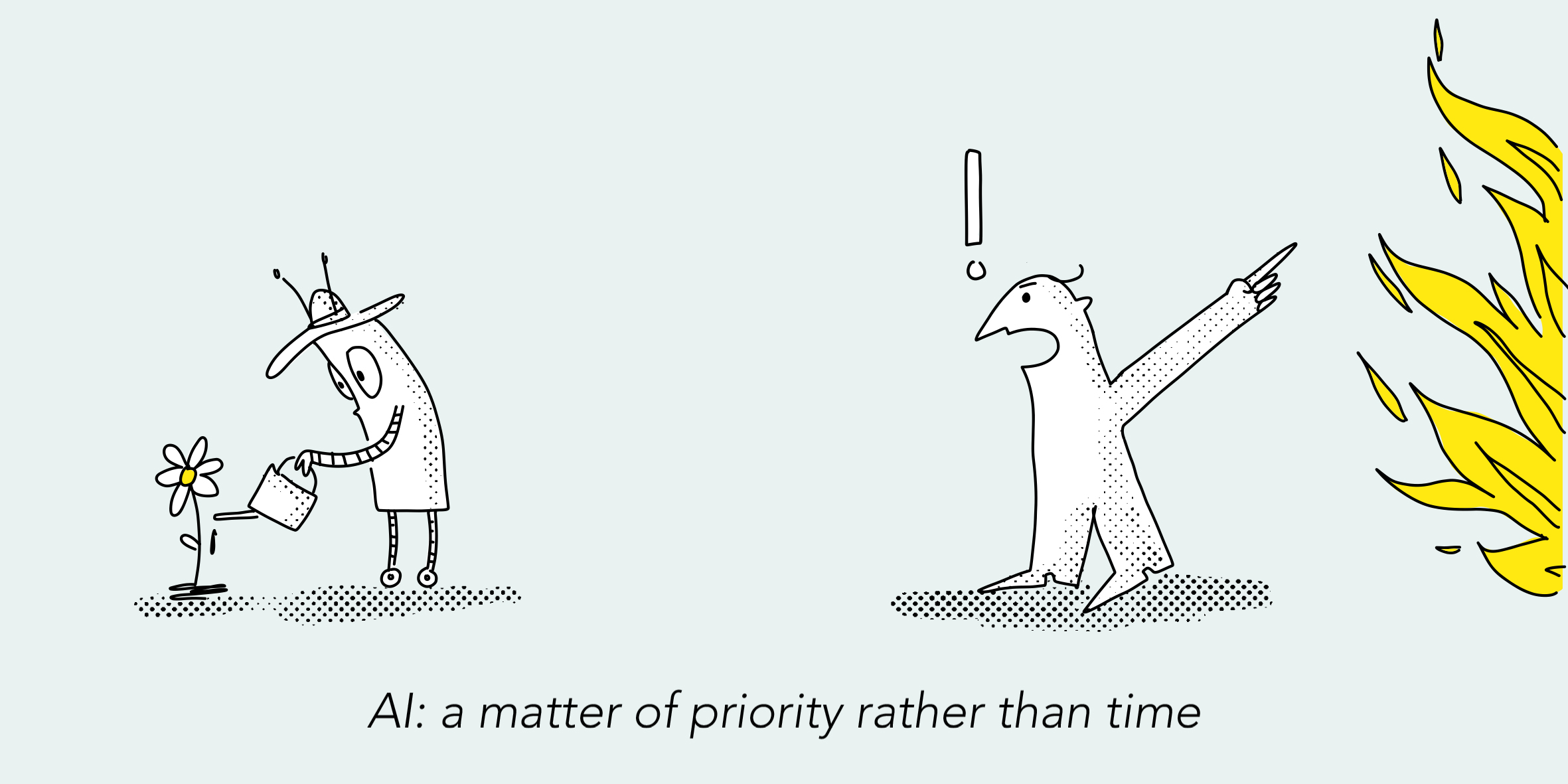These days artificial intelligence tools come in many shapes and sizes. Plug-and-play platforms are finding their way into the market with the promise of a quick and easy AI implementation. However, plug-and-play isn’t always the right way to go when it comes to AI. To make the technology work for you, you’ll need to adapt the AI model in more ways than one. You’ll need more than just the push of a button to reap the benefits.
A real-world environment
It’s easy to create a perfectly fine and functioning AI model from the comforts of your own home. All you need is a computer to get started. A few hours of research and development and ta-daa: your very own artificial intelligence model is born. So let’s take it to your company and plug it in the socket somewhere… Chances are, nothing happens. While the AI model might work on your computer, it’s probably pretty useless in your organisation because it’s not adapted to this environment.
Plug-and-play systems are created in the neutral, clean and protected world of computers. But out there in the real world, an AI system is subjected to all kinds of challenges. Especially when you want to use the model in harsh environments like a production floor. Elements such as vibrations of machinery or dirt coming from the assembly line interfere with AI sensors. You get it: artificial intelligence needs time to be adapted to and trained in the right environment.
A data strategy
Before even thinking of installing an AI model in your company’s environment, you have to test it. To do that, you need data. Lots and lots of data. Preferably clean, accurate and relevant data. Without it, you won’t get the results you want from your AI model. And while AI is very powerful, it can’t make useful data appear out of thin air. You need to gather it and set up a strong data infrastructure.
Every company should have a decent data strategy. It’s important to know what kind of data you have and need, and it’s equally crucial to have a storage and protection plan. Where will you keep the data and how do you keep it safe from data breaches? So while plug-and-play platforms promise a quick fix, you’ll still need time to come up with a data strategy.
Other systems
Even though artificial intelligence gets all the credit, it never does it all on its own. It requires other systems to function and give you reliable output. Your production machines, your CRM software or even your Excel sheets: these are important sources for AI. Connecting AI to other systems isn’t an easy process. A lot of business software is a closed system, meaning it doesn’t offer to connect with another tool. There are workarounds to set up the connection anyway, but it’ll definitely be a challenge.
Make AI a priority
More and more AI companies jump on the plug-and-play bandwagon. While their intentions are mostly good, it’s essential to keep in mind that an AI implementation will always require your time and attention. You need to make it a priority so that artificial intelligence works for you and with you. Even when you use a plug-and-play tool, you still need to adapt it to your environment, connect it with other systems and use clean data. If you don’t do this, you risk having a state-of-the-art system that no one in your company wants to use because it can’t reach its full potential. Avoid a failed implementation; give AI the time it needs.
